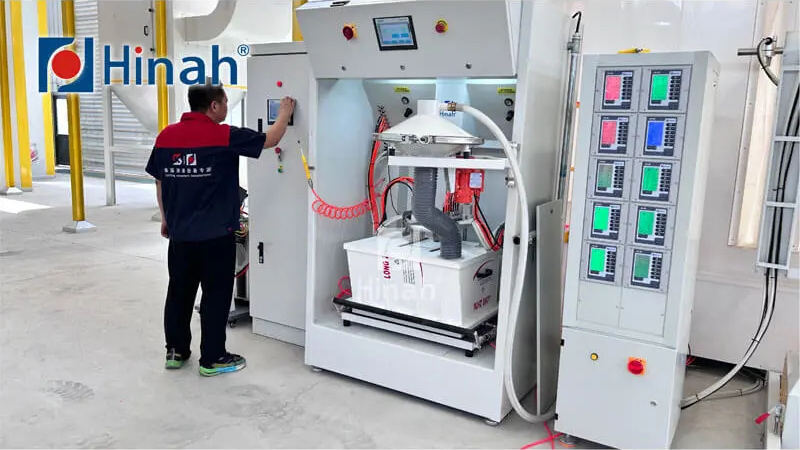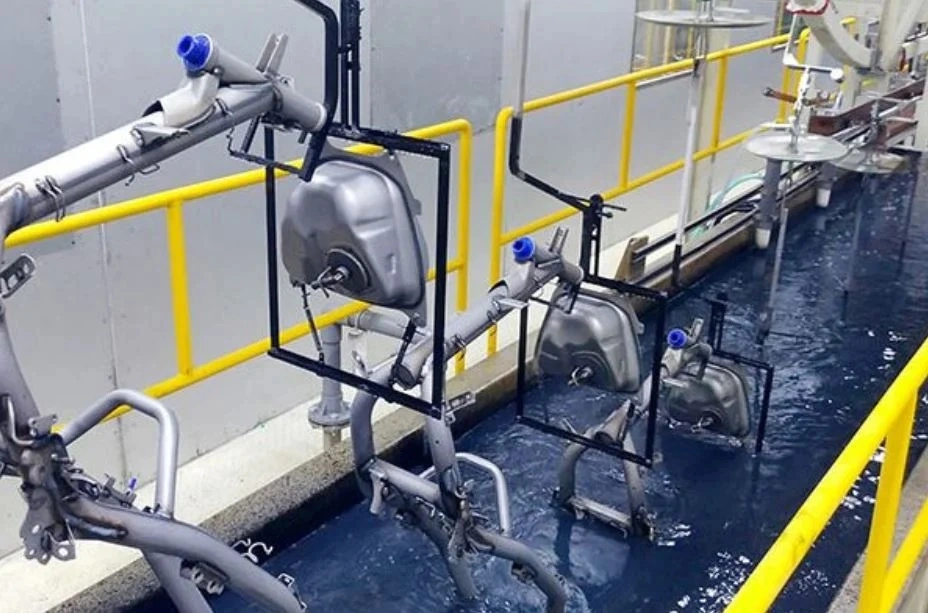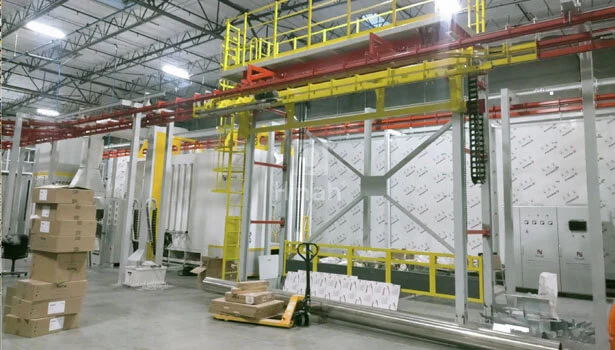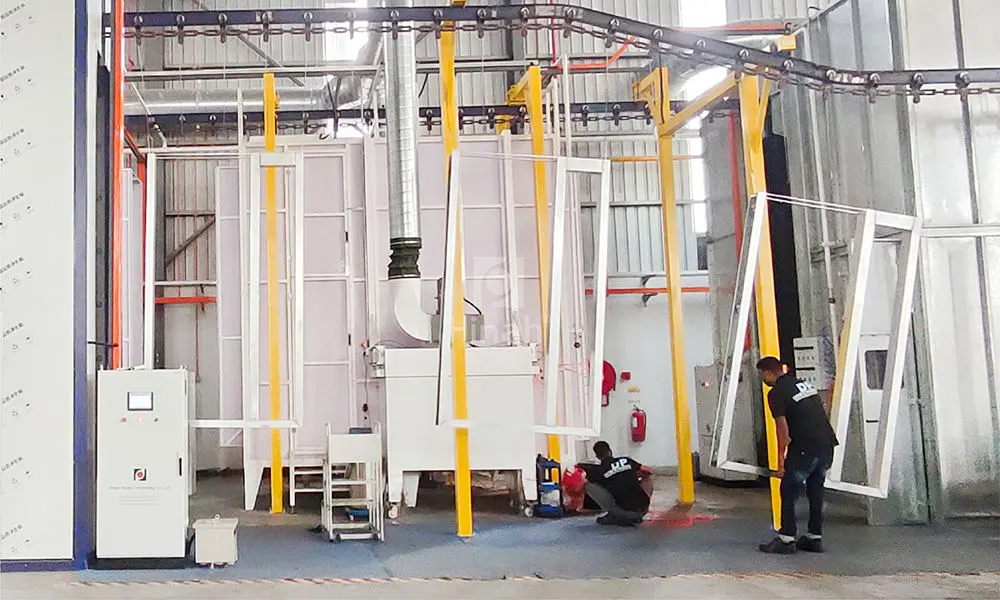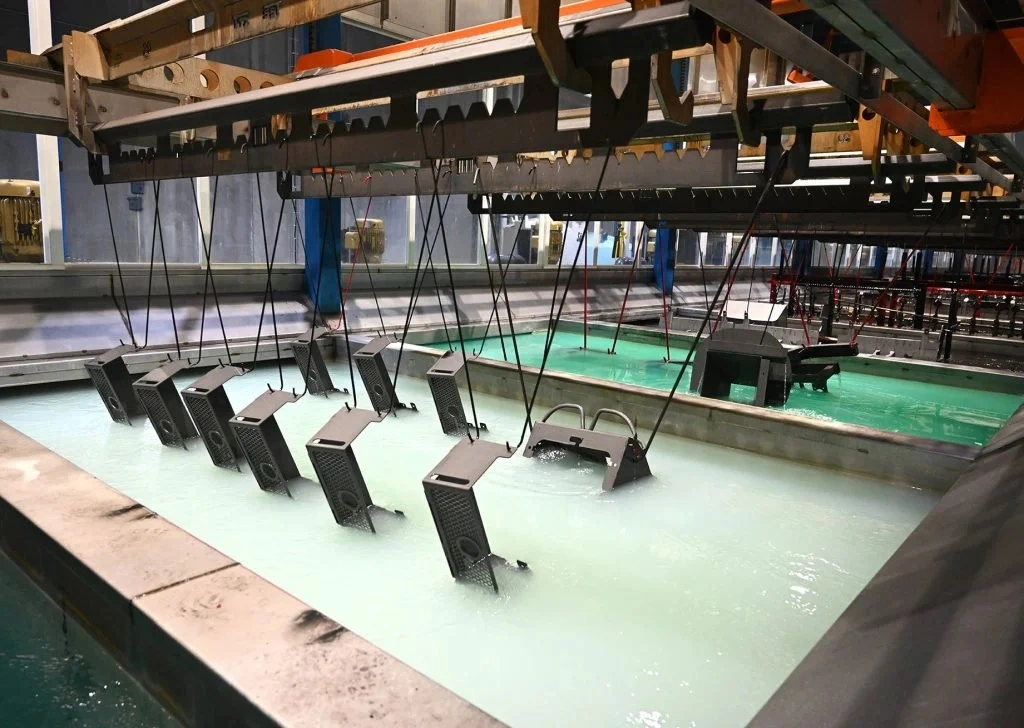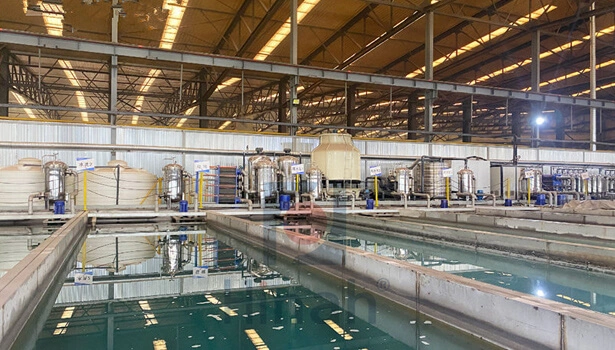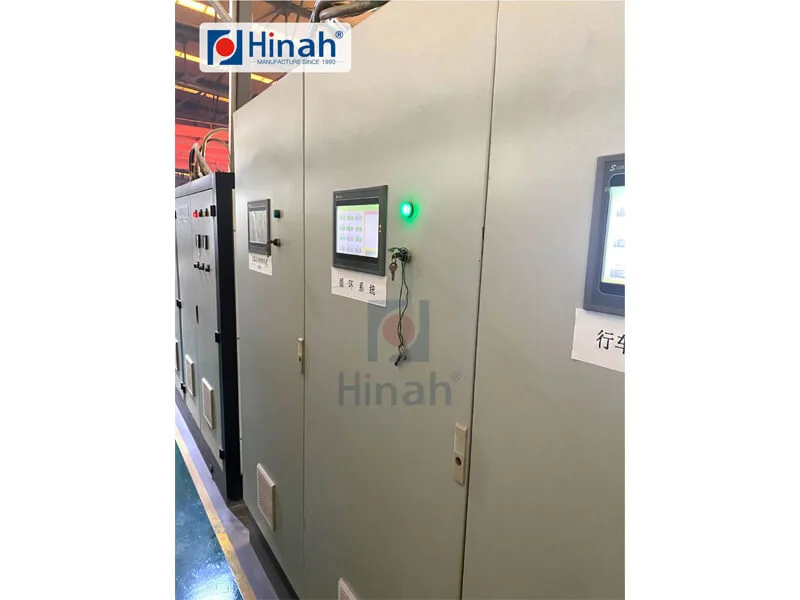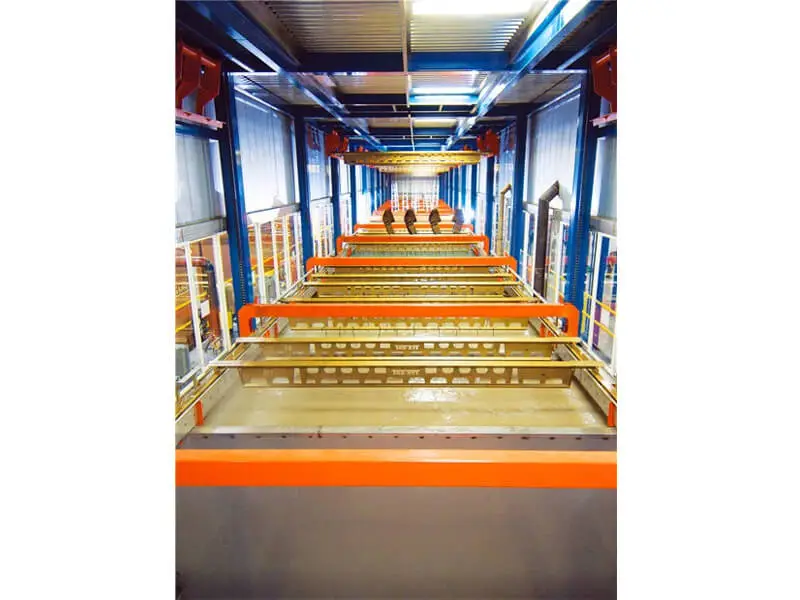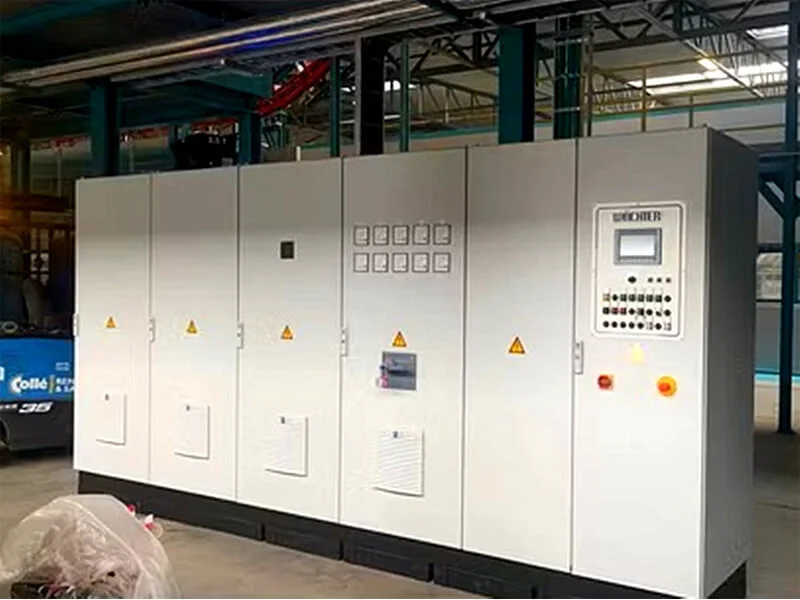In today's competitive manufacturing landscape, efficiency, consistency, and quality are paramount. This is where the Automatic paint robot comes into play, revolutionizing how industries apply coatings to products. These sophisticated systems are not just a luxury but a necessity for businesses aiming to scale production, reduce waste, and meet stringent environmental and safety standards. From automotive assembly lines to furniture manufacturing, automatic paint spraying robot systems are becoming the backbone of modern finishing processes. But what exactly are these technologies, and how do they integrate into larger setups like a Robotic Powder Coating System or an Automated Powder Coating Cell? This article delves into the world of automated coating, exploring its components, benefits, and common challenges, providing a comprehensive overview for industry professionals and enthusiasts alike.
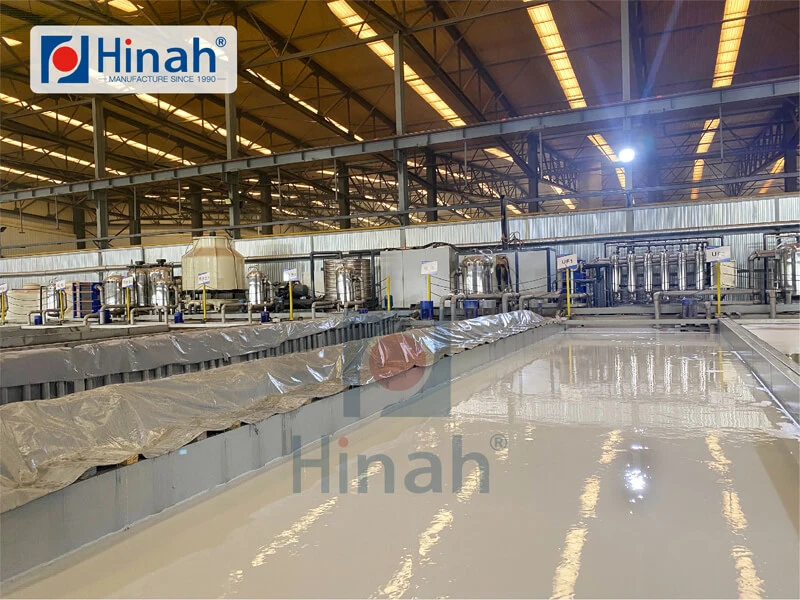
Understanding Automatic Paint Spraying Robots
An automatic paint spraying robot is a programmable machine designed to apply liquid paint or coatings to surfaces with high precision. These robots typically feature multi-axis arms, similar to those found in assembly robots, but equipped with specialized spray guns and sensors. They are integrated into production lines to handle tasks that require consistency, such as painting car bodies, electronic enclosures, or even consumer goods.
The core advantage of using an automatic paint spraying robot is its ability to deliver uniform coating thickness, reduce overspray, and operate continuously without fatigue. Unlike manual painting, which can be inconsistent and prone to human error, robots ensure every product meets the same high standard. They are also equipped with advanced vision systems to detect product dimensions and adjust spraying paths accordingly, minimizing material waste and maximizing coverage.
Moreover, these systems often include environmental controls, such as enclosed booths, to manage fumes and overspray, contributing to a safer workplace. As industries push for more sustainable practices, the automatic paint spraying robot helps reduce VOC (Volatile Organic Compound) emissions by optimizing paint usage and incorporating efficient recovery systems.
The Role of Robotic Powder Coating Systems
While liquid painting is common, powder coating offers a durable, eco-friendly alternative. A Robotic Powder Coating System automates the application of dry powder to surfaces, which is then cured under heat to form a protective layer. This system is ideal for products requiring high resistance to corrosion, chemicals, or wear, such as agricultural machinery, bicycles, or metal furniture.
The Robotic Powder Coating System typically consists of a robot arm with an electrostatic spray gun, a powder delivery system, and a curing oven. The robot precisely applies the powder, ensuring even coverage on complex geometries, including edges and recesses that might be challenging for manual application. The electrostatic charge helps the powder adhere to the grounded product, reducing waste and allowing for reclaiming and reusing excess powder.
One of the key benefits of this system is its environmental friendliness. Powder coatings contain no solvents, meaning they release negligible VOCs during application. Additionally, the efficiency of a Robotic Powder Coating System translates to lower material costs and faster cycle times, making it a popular choice for high-volume production.
Integrating Automated Powder Coating Cells
An Automated Powder Coating Cell takes automation a step further by creating a self-contained unit that handles the entire powder coating process. This cell includes not only the robot but also pre-treatment stages, masking equipment, and conveyor systems for seamless workflow. It is designed for minimal human intervention, from loading and unloading to curing and inspection.
In an Automated Powder Coating Cell, products enter through a conveyor, undergo pre-treatment (e.g., cleaning and phosphating), are coated by the robot, and then moved to the curing oven. The cell is often equipped with IoT sensors for real-time monitoring of parameters like temperature, humidity, and powder flow, ensuring consistent quality. This integration is crucial for industries like aerospace or automotive, where coating specifications are stringent.
The scalability of such cells allows manufacturers to adapt to changing production demands. For instance, an Automated Powder Coating Cell can be reprogrammed for different product sizes or coating types, providing flexibility without significant downtime. This adaptability is a significant advantage in custom manufacturing or small-batch production.
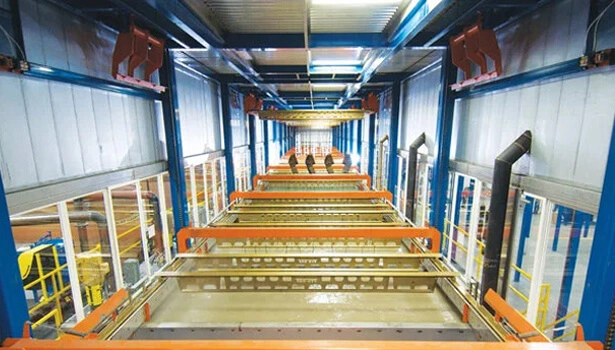
Streamlining Production with Robotic Powder Coating Lines
For large-scale operations, a Robotic Powder Coating Line represents the pinnacle of automation. This is a comprehensive setup comprising multiple stations—pre-treatment, coating, curing, and cooling—all synchronized through a central control system. The line is designed for high-throughput environments, such as appliance manufacturing or architectural metalwork, where thousands of parts need coating daily.
A Robotic Powder Coating Line leverages multiple robots working in tandem to handle various products simultaneously. For example, one robot might coat large surfaces, while another handles intricate parts. The line’s conveyor system ensures a continuous flow, minimizing bottlenecks. Advanced software manages the entire process, from scheduling to quality control, using data analytics to optimize performance and predict maintenance needs.
The efficiency of a Robotic Powder Coating Line not only boosts productivity but also enhances worker safety by reducing exposure to hazardous materials. It also supports sustainability goals through energy-efficient ovens and powder recycling systems, aligning with global trends towards greener manufacturing.
Common Challenges in Automated Coating Systems
Despite their advantages, automated coating systems face several challenges that manufacturers must address to maximize their investment.
Initial Cost and ROI Concerns: Implementing an automatic paint robot or a Robotic Powder Coating System requires significant upfront investment. Small to medium enterprises may find the cost prohibitive, though long-term savings in labor and material often justify the expense. Calculating ROI accurately based on production volume and quality improvements is crucial.
Programming and Integration Complexity: Setting up these systems demands expertise in robotics and software integration. Programming paths for an automatic paint spraying robot to handle complex parts can be time-consuming. Additionally, integrating with existing production lines, such as conveyors or ERP systems, may require custom solutions.
Maintenance and Downtime: Automated systems are mechanical and require regular maintenance to prevent failures. Nozzle clogging in paint robots or powder buildup in coating systems can lead to downtime. Predictive maintenance through IoT sensors helps but adds to the operational complexity.
Material and Environmental Factors: The performance of an Automated Powder Coating Cell depends on consistent material quality. Humidity, temperature, or contamination can affect powder flow and adhesion. Similarly, paint viscosity must be controlled for spray robots to avoid defects like orange peel or runs.
Training and Skill Gaps: Operating these technologies requires trained personnel. Many manufacturers struggle to find technicians skilled in robotics maintenance or programming, leading to reliance on external experts and higher costs.
Adapting to Product Variability: While robots excel at repetitive tasks, frequent product changes can challenge flexibility. Reprogramming a Robotic Powder Coating Line for new parts may require downtime, though offline programming software mitigates this.
Safety and Compliance: Despite automation, safety risks remain, such as ignition hazards in powder coating environments or exposure to chemicals during maintenance. Compliance with regulations like OSHA standards is essential but can be complex.
Addressing these challenges through proper planning, training, and technology selection is key to successful implementation.
The adoption of automatic paint robot technologies is no longer a trend but a cornerstone of modern manufacturing. From the precision of an automatic paint spraying robot to the comprehensive efficiency of a Robotic Powder Coating Line, these systems offer unparalleled benefits in quality, sustainability, and productivity. While challenges like cost and integration exist, the long-term advantages make them indispensable for competitive industries.
As technology advances, we can expect even smarter systems with AI-driven adjustments and greater connectivity. For manufacturers, investing in automated coating is not just about keeping up—it’s about leading the way in innovation and excellence. Whether you’re considering a standalone Robotic Powder Coating System or a full Automated Powder Coating Cell, the future of industrial coating is undoubtedly automatic.


